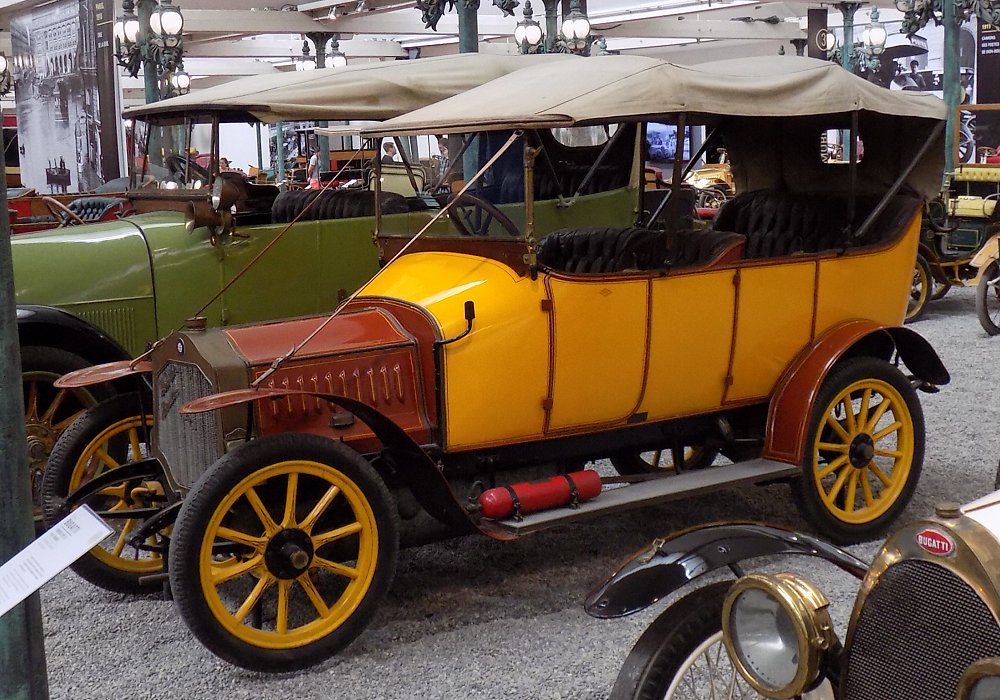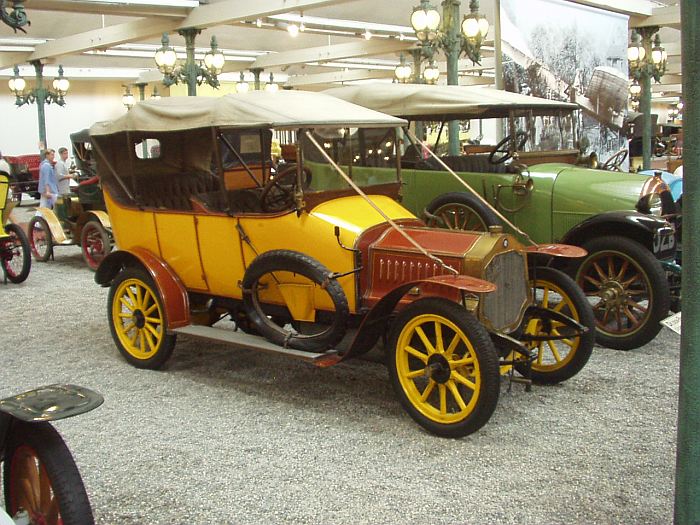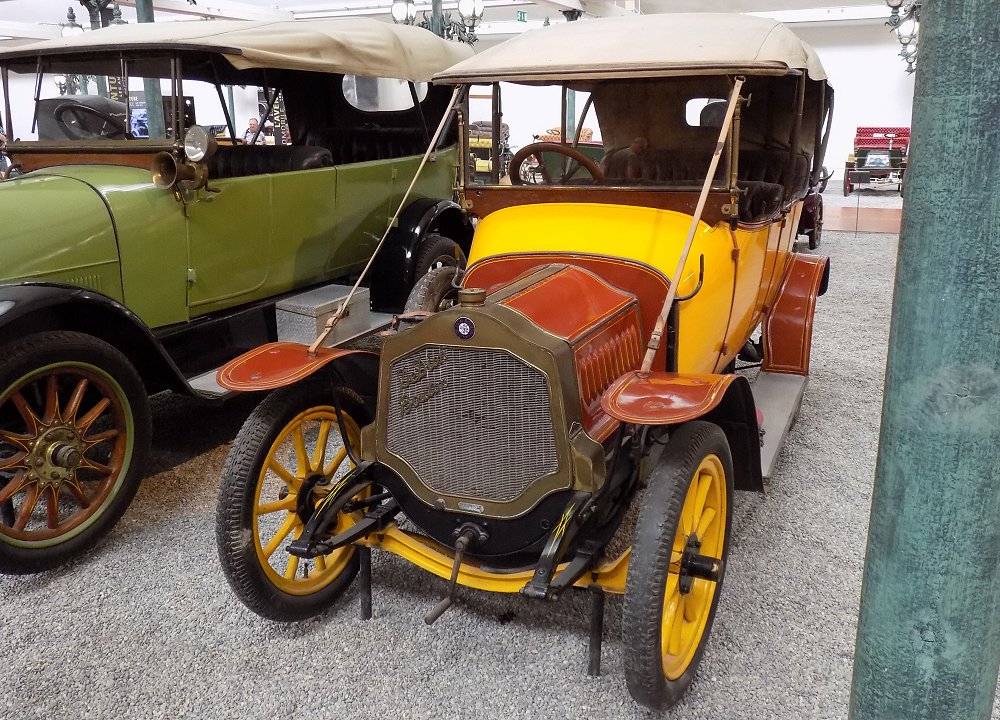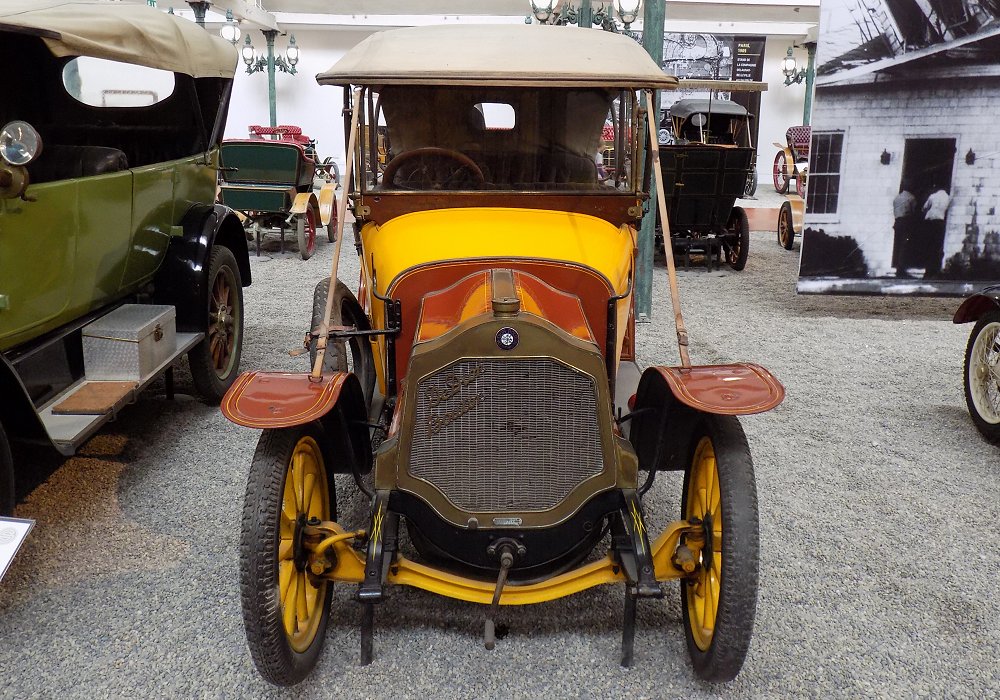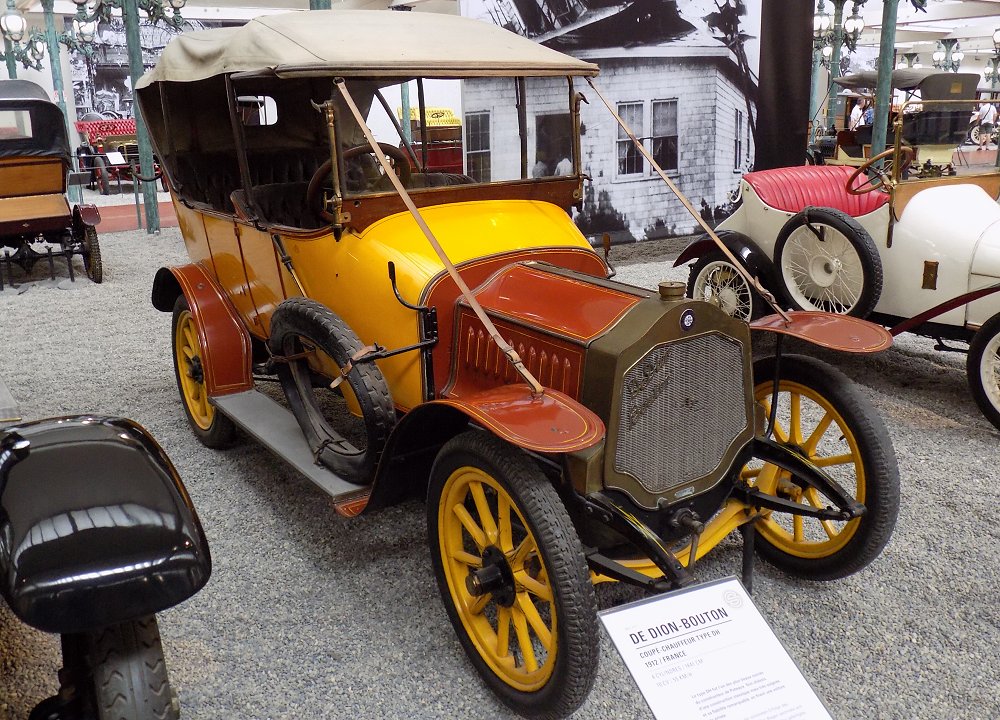Description
The De Dion-Bouton Type DH Torpedo was introduced in the early 1910s, a period when the French manufacturer was expanding into larger and more powerful touring cars to meet the rising demand for practical and stylish long-distance vehicles. The “Torpedo” body style was a modern and fashionable choice at the time, known for its aerodynamic profile and open design, often favoured by upper-class motorists and those with a taste for performance and elegance.
The Type DH was typically powered by a four-cylinder petrol engine with a displacement in the range of 3.0 to 3.5 litres, producing approximately 16 to 20 horsepower depending on the version and year. The engine was front-mounted and water-cooled, using a side-valve configuration with magneto ignition. This provided dependable performance and ease of maintenance, in line with De Dion-Bouton’s reputation for engineering quality.
The transmission was a three- or four-speed manual gearbox, delivering power to the rear wheels via a robust shaft drive system. Gear changes were made through a floor-mounted lever, and the ratios were well-suited to both city and rural driving conditions. While not a sports car by modern standards, the Type DH could comfortably cruise at speeds between 50 and 70 km/h, impressive for the period and sufficient for long-distance touring.
The Torpedo body was notable for its long, low-slung silhouette, a departure from the more upright and boxy designs of earlier models. It featured a tapered rear end, open sides, and a folding canvas roof, with little weather protection beyond a basic windscreen and optional side curtains. The seating configuration generally allowed for four or five passengers, with two in the front and a full-width rear bench.
The chassis was constructed from steel with a ladder-frame layout, offering strength and flexibility. The suspension used semi-elliptic leaf springs at both the front and rear, while the braking system was mechanical, acting on the rear wheels and supplemented by a transmission brake. Though basic, this setup was adequate for the vehicle’s performance and typical road conditions of the time.
The car’s exterior was often painted in muted, refined colours such as burgundy, dark green, or grey, with brass or nickel-plated detailing around the lamps, radiator, and controls. Wheels were either wooden artillery-style or early wire-spoked versions, fitted with narrow pneumatic tyres appropriate for the roads of the era.
Inside, the Type DH Torpedo offered a mix of simplicity and comfort. The dashboard was sparsely equipped with essential gauges and switches, while the seats were typically upholstered in leather. The open nature of the design made it ideal for scenic motoring in fair weather, and it was a popular choice among early enthusiasts who appreciated the combination of style, speed, and mechanical reliability.
The De Dion-Bouton Type DH Torpedo represents a significant moment in early automotive history, marking a shift from horseless carriage styling to more modern and dynamic vehicle designs. It blended dependable French engineering with a fashionable touring body, making it one of the more admired De Dion-Bouton offerings of its time.
Today, surviving examples are rare and highly regarded in veteran car circles. They are often seen in historic driving events such as the London to Brighton Veteran Car Run, where their graceful lines and mechanical authenticity are celebrated by collectors and spectators alike.
